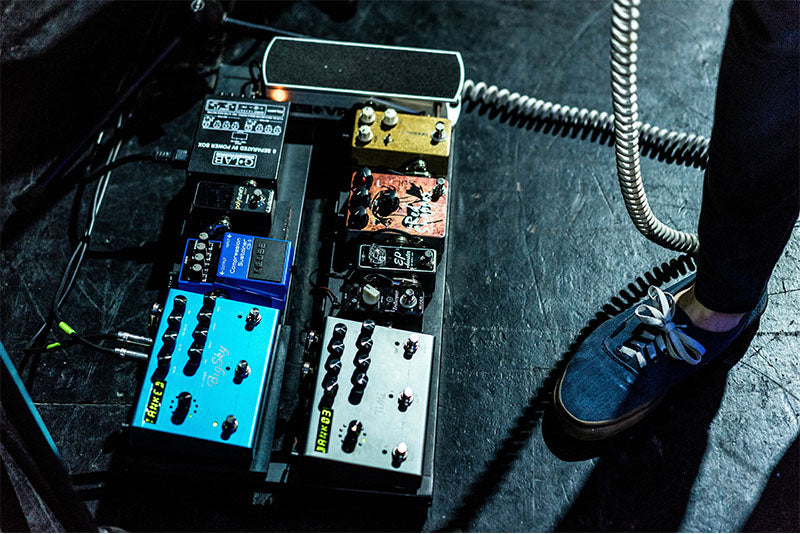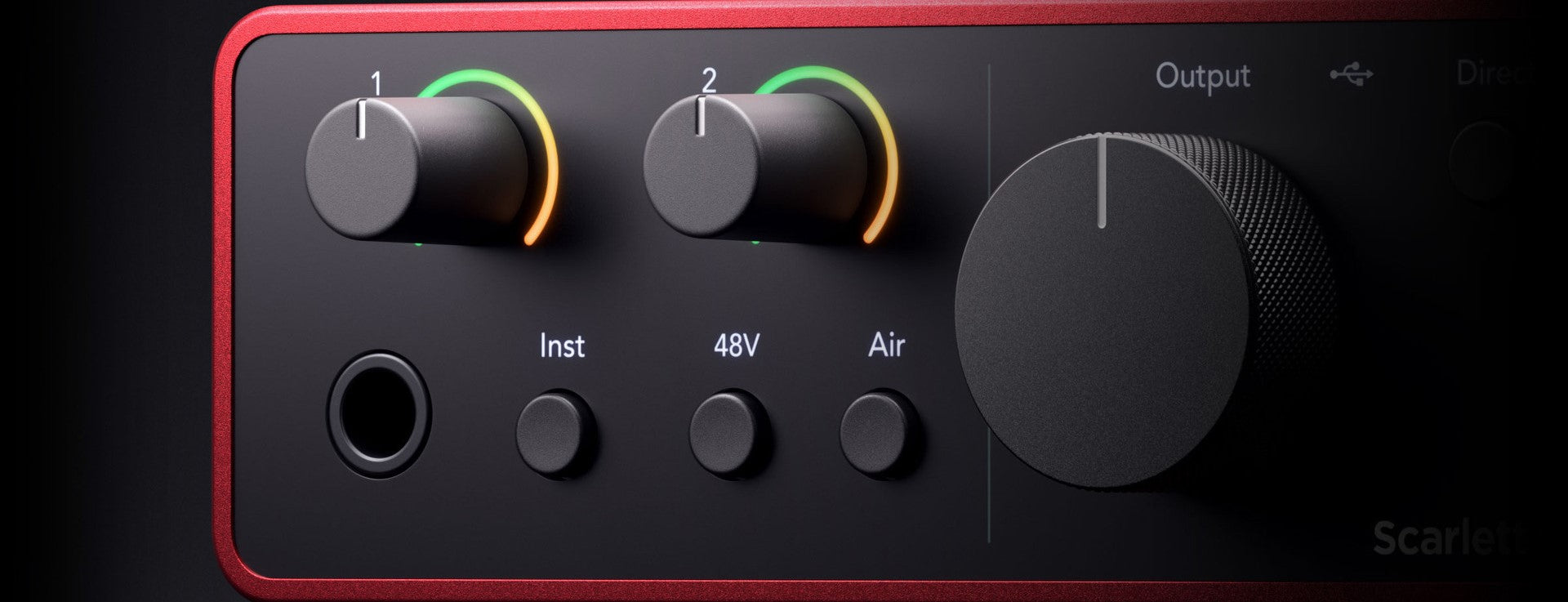5 Ways To Use A Compressor Pedal
5 Quick Reasons To Use A Compressor
1. You use a pick as well as fingers to pluck the strings.
2. You use a volume pedal as an effect such as swells or drones.
3. You use a tremolo pedal and notice a loss in volume when engaged.
4. You want more consistency from playing full chords to single notes.
5. You want to keep a certain pedal from being to loud or soft when engaged
What does a compressor do?
Simply put a compressor evens out the perceived volume difference between loud notes and soft notes as well adjusting the overall volume level. The desired effect is sound that is energetic and punchy without the volume spikes from things like a strong pick attack on a single note.
There are many different compressors on the market, they all do essentially the same thing. So then what do all the knobs do? And why do some compressors have more knobs like four or five and others like the Dyna Comp only have two? Let's try to clear up the subject.
The most basic control is the "Threshold". This can go by many other names such as "Sustain", "Sensitivity" or "Compression". This control decides at what signal level (Volume level) should the compression start to kick in.
Then there is Attack; Attack is simply how quick the compression happens. Then Release; Release is the opposite of Attack, where it is how long it takes for the compression to leave.
Ratio may have labels attached to it such as 1:1, 2:1, 3:1 or 4:1. Basically the bigger the number on the left of the colon the more compression.
Another very common control is Volume sometimes called Gain. This control is very useful to make up for the perceived volume loss caused by compression. Compression brings the peaks in volume down, while the gain brings the whole signal up, creating a more uniform sound at a suitable volume level.
Another control you will see on parallel compressors is the Blend control. The Blend allows you to reintroduce your clean uncompressed guitar signal back into the compressed signal helping give more clarity and punch without sounding overly "squashed".
Bring on the Knobs! All compressors basically do the same thing, but some pedals allow for more control than others. The Ross and Dyna Comp style compressors combine several controls into the single knob labeled "Sustain". This single knob affects the Threshold, Attack, Release and Ratio. Simple control for those who don't want to dive deep into the ins and outs of compression. If you're a tone chaser, you probably want more exacting control over your compression. You would want a pedal with more knobs. Enter the Boss CS-3.
Where do I put my compressor in my effects chain?
Where should you stick that compressor? I'll show you where to stick it! Many will place the compressor towards the beginning of the signal chain. By doing this you shape the tone of your guitar signal, allowing the rest of your pedals to affect dynamics such as drives, delays and reverbs. This is also a perfect place for a more subtle set compression. If you set your compressor for the "squashed" sound placing it before drives is useful. Overdrive and distortion pedals will add compression as they add sustain and drive. Because of this it is important to listen to how your compressor "plays with" or affects the drives that are after it. One thing to be aware of when placing your compressor towards the beginning of the chain (notice how I didn't say first) is Fuzz! Fuzz doesn't always play well with compressors. Old style fuzzes that us a germanium transistor like the early style Fuzz Face or a Tone Bender need to be first in your chain so you simply have to place your compressor after or not use the fuzz and compressor together.
If a compressor is placed after the drive section, it will act more like a line-leveler instead of a tone shaping tool (it's still shaping your tone but in a different way). If you stack drive pedals or use a boost to create more saturation but get spiky volume levels you may want to try this method out. A compressor in this spot will even out the volume difference between your different drive pedals creating a more consistent volume level as switch between different pedals.
We can also stick compressor at the end the chain. Why last you ask? Just like the compressor levels out the drive section in scenario #2, placed last is will level out your entire board. So if you have a pedal such as a reverb that is causing volume spikes, this may help remedy this issue. I do recommend trying your compressor in more than one place in your signal chain before you just decide where it should live. Use your ears and maybe you find some personal version of one of these three ideas.
So if you have taken the time to read this I am assuming you have an interest in trying out compressor on your pedal board. This article does not go into any detail on how to dial in a compressor, we will leave that for another time. Compressors are best used to fix specific tone issues that you are having, or to achieve a certain musical style. Funk and Country "Chickin Pickin" demand compression. Generally speaking however, compressors are best used when they are subtle. They can quickly jack up your tone (in a bad way) if you get carried away with them. Stay Tuned for more tips and tricks. Feel free to join the discussion and leave us comment!



